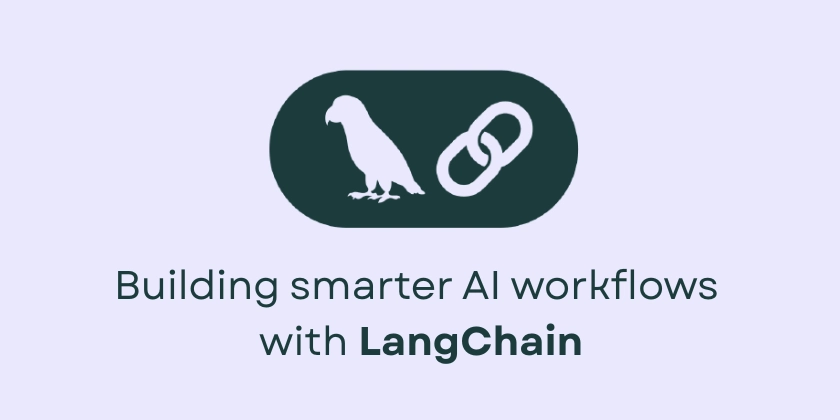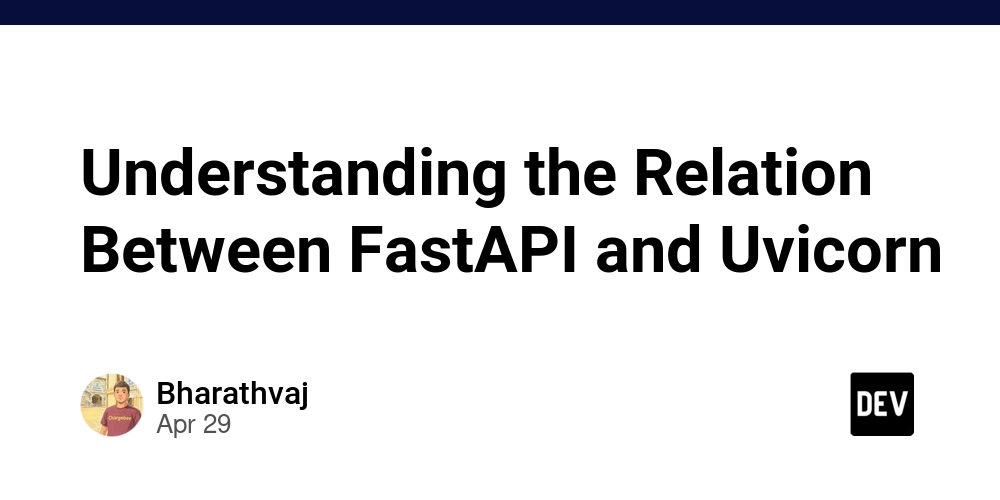Building Smarter AI Workflows with LangChain
LangChain is one of the most exciting tools to emerge in the world of LLM application development. Whether you’re building a chatbot, an autonomous agent, or a content pipeline, LangChain provides the modularity and flexibility to move fast — without compromising structure. In this post, I’ll give you a brief intro to LangChain, show a quick usage example, and walk you through how I used it to build TersAI — a tool that fetches, summarizes, tones, and tweets AI news in real-time. What is LangChain? LangChain is a framework for building applications with large language models (LLMs). It’s like a “backend SDK” that gives structure to everything from prompt templates to multi-step agent workflows. Core Components LLMs: Interface with models from OpenAI, Anthropic, Cohere, etc. PromptTemplate: Reusable, parameterized prompts. LLMChain: Chain prompts + models together. Tools & Agents: Give your LLM access to functions, APIs, or search. Memory: Store conversational context across turns. VectorStores: Use embeddings to build retrieval-based apps (RAG). LangChain helps you go from "just calling the model" to building robust, production-ready pipelines. Example Usage of LangChain Let’s say you want to create a quick question-answering tool. Here's how simple it is with LangChain: from langchain.llms import OpenAI from langchain.prompts import PromptTemplate from langchain.chains import LLMChain ### Step 1: Set up a prompt template prompt = PromptTemplate( input_variables=["question"], template="Answer the following question in one sentence:\n{question}" ) ### Step 2: Choose the LLM llm = OpenAI(temperature=0.7) ### Step 3: Create the chain qa_chain = LLMChain(llm=llm, prompt=prompt) ### Step 4: Run it response = qa_chain.run("What is the future of AI?") print(response) This pattern of defining a prompt → choosing a model → chaining → running is at the heart of LangChain. My Project: TersAI TersAI is an AI-powered agent that automates the process of: Fetching the latest articles Summarizing them in a crisp format Adapting the tone to match a target X (formerly Twitter) profile Posting the result directly to X (formerly Twitter) The goal is simple: Deliver relevant AI updates, in the given tone, consistently. See it in action -> TersXAI What I Used from LangChain SystemMessage from langchain_core.messages to define role-based message formatting A custom ChatOpenRouter wrapper extending LangChain's ChatOpenAI to use OpenRouter’s Gemini model Precise prompt control using formatted system instructions, with strict rules tailored to social media tone and length Final Thoughts LangChain helped me build clean, maintainable LLM chains in TersAI without having to reinvent prompt logic or chain execution manually. If you’re building AI-driven tools — whether chatbots, summarizers, or automation agents — LangChain is a solid choice to speed up development. Resources LangChain Documentation OpenAI Python SDK

LangChain is one of the most exciting tools to emerge in the world of LLM application development. Whether you’re building a chatbot, an autonomous agent, or a content pipeline, LangChain provides the modularity and flexibility to move fast — without compromising structure.
In this post, I’ll give you a brief intro to LangChain, show a quick usage example, and walk you through how I used it to build TersAI — a tool that fetches, summarizes, tones, and tweets AI news in real-time.
What is LangChain?
LangChain is a framework for building applications with large language models (LLMs). It’s like a “backend SDK” that gives structure to everything from prompt templates to multi-step agent workflows.
Core Components
- LLMs: Interface with models from OpenAI, Anthropic, Cohere, etc.
- PromptTemplate: Reusable, parameterized prompts.
- LLMChain: Chain prompts + models together.
- Tools & Agents: Give your LLM access to functions, APIs, or search.
- Memory: Store conversational context across turns.
- VectorStores: Use embeddings to build retrieval-based apps (RAG).
LangChain helps you go from "just calling the model" to building robust, production-ready pipelines.
Example Usage of LangChain
Let’s say you want to create a quick question-answering tool. Here's how simple it is with LangChain:
from langchain.llms import OpenAI
from langchain.prompts import PromptTemplate
from langchain.chains import LLMChain
### Step 1: Set up a prompt template
prompt = PromptTemplate(
input_variables=["question"],
template="Answer the following question in one sentence:\n{question}"
)
### Step 2: Choose the LLM
llm = OpenAI(temperature=0.7)
### Step 3: Create the chain
qa_chain = LLMChain(llm=llm, prompt=prompt)
### Step 4: Run it
response = qa_chain.run("What is the future of AI?")
print(response)
This pattern of defining a prompt → choosing a model → chaining → running is at the heart of LangChain.
My Project: TersAI
TersAI is an AI-powered agent that automates the process of:
- Fetching the latest articles
- Summarizing them in a crisp format
- Adapting the tone to match a target X (formerly Twitter) profile
- Posting the result directly to X (formerly Twitter)
The goal is simple: Deliver relevant AI updates, in the given tone, consistently.
See it in action -> TersXAI
What I Used from LangChain
-
SystemMessagefromlangchain_core.messagesto define role-based message formatting - A custom
ChatOpenRouterwrapper extending LangChain'sChatOpenAIto use OpenRouter’s Gemini model - Precise prompt control using formatted system instructions, with strict rules tailored to social media tone and length
Final Thoughts
LangChain helped me build clean, maintainable LLM chains in TersAI without having to reinvent prompt logic or chain execution manually. If you’re building AI-driven tools — whether chatbots, summarizers, or automation agents — LangChain is a solid choice to speed up development.








































































